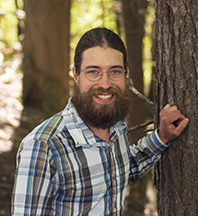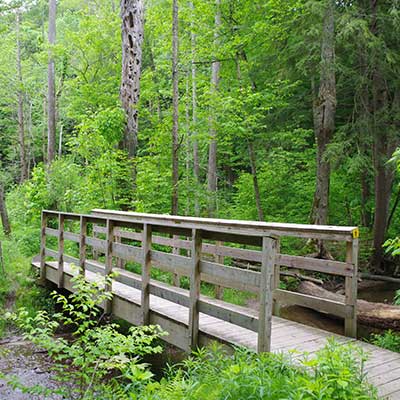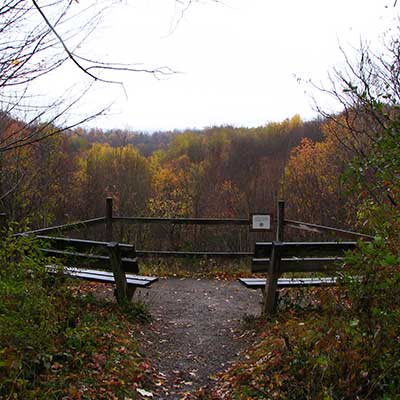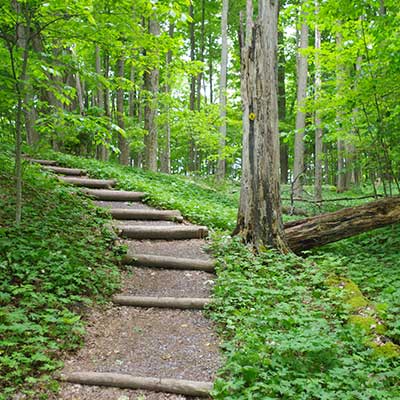The Makings of a Good Trail
Week of May 30 – June 5, 2021

Many trails at Baltimore Woods feel like they’ve always existed. A log here or a bridge there, a path through the woods seems simple in its creation. As appealing as the thought is, it is far from the truth.
A good trail starts with a plan. John Weeks, the designer of many of the trails at Baltimore Woods, outlined a design philosophy that enhances the experience on a trail. First, nature center trails are best as loops that start and end at the same place. This reduces backtracking and makes every part of the visit feel new. Next, the trail must be the right length, not too long and not too short for the people who will want to use it. When laying out the trail, it should follow contours and have as gentle a slope as possible. It should pass interesting features along the way, ideally 12-18 every half mile. A well planned trail should not have long straight views where you can see an excessive amount of trail, and little turns should hide long stretches of trail to enhance a feeling of solitude. Finally, the trail should use vistas and elevation to add to the views from the trail whenever possible.
In addition to the experience on the trail, serious thought must be given to the physical location of the trail to ensure that it will stay stable and usable. Wet spots should be avoided, slopes need to be gentle enough to safely accommodate tread, and drainage has to be carefully considered. If the physical features are not accounted for, even the most beautiful trail will quickly become unusable.
Next time you are out in the woods look at the trail you are on and try to see the design reasons that put it there. See how many interesting spots you find, or consider how a little elevation enhances the views.





